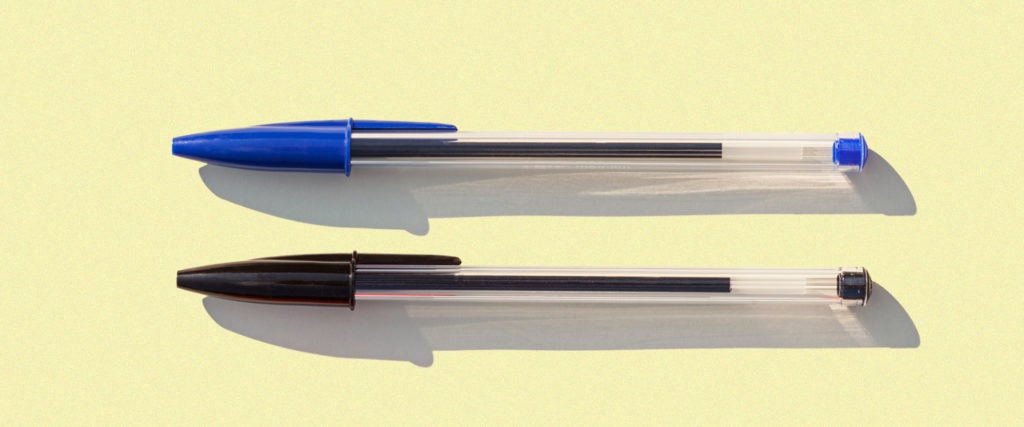Considering I almost exclusively wear black clothing, you can bet your ass I exclusively write in black ink. Blue ink is for people with serotonin. That said, blue ink is almost just as ubiquitous in pen-form as black ink, which seems kind of arbitrary. Black makes sense, but why blue and not green or purple? Surely those are just as legible as blue, without the harsh teacher-grading-your-test vibe of red. How’d we get stuck with black and blue as the only acceptable pen colors (literally, when it comes to your ballot)?
It’s basically because of what ink is. In its earliest form in 1,200 B.C.E. China, ink was made from soot and oil. In the 4th century, an ink developed in India using charred bones and tar became popularized. As a widely available and naturally occurring color, black was the easiest and most accessible color for ink to be. In Europe from the 5th century onward, though, most ink was formed from iron and tannic acids from vegetables, creating a brownish, purplish concoction called iron gall ink. When dried, the color of this ink appeared a deep shade of blackish-blue.
Another contributing factor to the popularity of blue ink was the development of synthetic pigments. The earliest form of modern synthetic pigment was created in 1704, called Prussian blue. Most of the synthetic pigments that followed were similarly deep shades of blue.
While it may have been possible to produce other lightly colored inks, this would have been challenging to read. Of course, this remains a guiding principle in inks today — legibility comes first. But when synthetic inks of other colors could eventually be mass produced in the 20th century, blue ink in particular continued to be popular partially out of familiarity, and partially out of a continued issue of availability. Today, blue and black inks aren’t only the easier colors to read, but also just what we’ve been accustomed to for decades. Legal documents and medical records often require the use of black or blue ink simply because they photocopy well and can be scanned. All this essentially creates a perpetual cycle of more and more blue and black ink.
Sure, you can write your diary in whatever color you please, but mainstream society will likely still demand that you utilize black or blue when you fill out your ballot. Unlike virtually everything else about this election cycle, it just makes sense.

